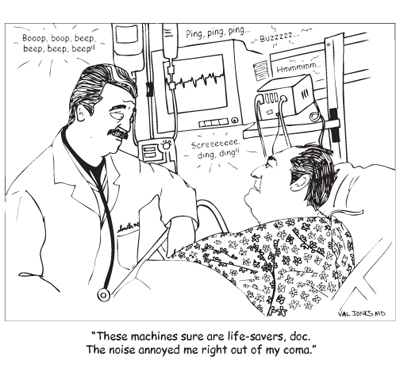August 1st, 2011 by Jessie Gruman, Ph.D. in Opinion
1 Comment »

 News of the World wasn’t read by 15 percent of the British public because it told people what they should know. It got there by giving them what they wanted: stories about the peccadilloes of the rich and famous, accounts of the gross incompetence of government and of course, pictures of naked ladies.
News of the World wasn’t read by 15 percent of the British public because it told people what they should know. It got there by giving them what they wanted: stories about the peccadilloes of the rich and famous, accounts of the gross incompetence of government and of course, pictures of naked ladies.
Setting aside the fact that News of the World is no more, its publishers and editors knew how to sell the “news.” As free online news replaces print, every click, every page view, every second of viewing per page is tracked in the fierce competition for ad dollars, and so the selling of news increasingly influences its reporting. Titles, format and content are tweaked by editors to “optimize the metrics.” Reporters succeed and fail based on their ability to write articles that attract eyeballs, not Pulitzer prizes.
In the health domain, the effects of these demands were described in a series of conversations the Center for Advancing Health hosted with health care journalists over the past month.* The themes that emerged were that journalists are often encouraged to: Read more »
*This blog post was originally published at Prepared Patient Forum: What It Takes Blog*
June 14th, 2011 by Mark Crislip, M.D. in Opinion, Quackery Exposed
No Comments »

Ambiguity. Medicine, like art, is filled with ambiguity, at least the way I practice it. Most of my practice is in the hospital. I am sometimes called to see patients that other physicians cannot figure out. And that puts me at a disadvantage, because the doctors who were referring patients to me are all bright, excellent doctors. Often the question is ‘Why does the patient have a fever?’ or ‘Why is the patient ill?’ Sometimes I have an answer. Most of the time I do not.
I am happy, however, to be able to tell the patient what they don’t have. I can often inform the patient and their family that whatever they have is probably not life-threatening or life-damaging, just life-inconveniencing, and most acute illnesses go away with no diagnosis. I always put the ‘just’ in air quotes, because illnesses that require hospitalization are rarely ‘just.’ Just without quotes is reserved for the antivaccine crowd and applied to the small number of deaths from vaccine preventable diseases in unvaccinated children. John Donne they ain’t.
We are excellent, I tell them, at diagnosing life-threatening problems that we can treat, and terrible at diagnosing processes that are self-limited. Of course diagnostic testing is always variable. No test is 100% in making a diagnosis, and often with infections I cannot grow the organism that I suspect is causing the patient’s disease. So for hospitalized patients, ambiguity and uncertainty are the rule of the day. Read more »
*This blog post was originally published at Science-Based Medicine*
May 24th, 2010 by Shadowfax in Better Health Network, Health Policy, News, Opinion
2 Comments »

There’s just so much hidden and buried in the Affordable Care Act (ACA) that it’s like trying the find all the goodies in an Easter egg hunt. ACEP News pointed out one hidden goodie, nicely illustrated in this article from Kaiser Health News:
Under the new health law, insurance companies must extend several new protections to patients who receive emergency care. One of the biggest guarantees: Patients who need emergency treatment will have their costs covered at the same rate, regardless of whether they are treated at “in-network” or “out-of-network” hospitals.
The law also bars health plans from requiring prior authorization for emergency services. And it mandates that plans follow the “prudent layperson” rule. For example, if a person goes to the ER with chest pain, but ends up being diagnosed with indigestion, the claim has to be covered because going to the hospital under those circumstances made sense.
The provisions go into effect for every health plan issued after Sept. 23 – six months after the law was enacted — that offers emergency coverage.
This is potentially quite significant. As with so many things, the devil is in the details, and the implementation is not yet actualized. Read more »
*This blog post was originally published at Movin' Meat*
 News of the World wasn’t read by 15 percent of the British public because it told people what they should know. It got there by giving them what they wanted: stories about the peccadilloes of the rich and famous, accounts of the gross incompetence of government and of course, pictures of naked ladies.
News of the World wasn’t read by 15 percent of the British public because it told people what they should know. It got there by giving them what they wanted: stories about the peccadilloes of the rich and famous, accounts of the gross incompetence of government and of course, pictures of naked ladies.












